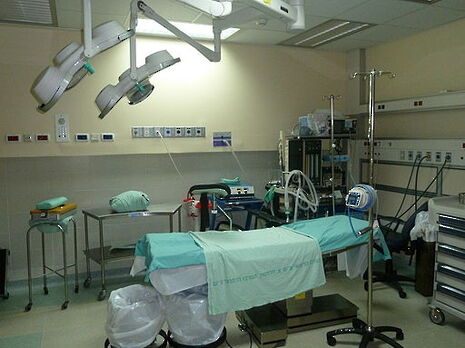What’s causing the UK’s maternal mortality rate?
Jeunese Payne explores the possible causes of maternal mortality in the UK

According to the World Health Organization (WHO), most maternal deaths occur in developing countries and are highest amongst low-income mothers, mothers under the age of 15, and mothers living in rural rather than urban areas.
Nevertheless, Save the Children’s 16th annual Mothers’ Index, which assesses the well-being of mothers and children in 179 countries, reports that women in the UK face a one in 6,900 lifetime risk of dying during pregnancy or birth. This risk is more than twice that of mothers in Austria (one in 19,200 risk) and Poland (one in 19,800 risk), and more than six times that of mothers in Belarus (one in 45,200)
According to a report by the Centre for Maternal and Child Enquiries (CMACE) entitled Saving Mothers’ Lives, women in the UK who die during pregnancy or childbirth tend to be older, more socially disadvantaged, and have lifestyles that are conducive to poorer health.
Women are leaving it later to have children so that they may pursue a higher education, find a stable job, and earn more, which arguably puts them in a better position to be mother. However, due to underlying health issues, women who have children in their 30s and 40s have an increased risk of complications during pregnancy, including maternal mortality. The highest maternal mortality rates in the UK are among older mothers, where their average age at childbirth is almost 30 years old. This fact is despite the high prevalence of teen pregnancy. However, Poland is not far behind at almost 29 years old. Other countries, such as Germany, have an average maternal age above 30 years old, and yet do not have as high a maternal morality rate as the UK. So, delayed pregnancy is not the whole story.
As well as having the oldest average age of mothers at their first childbirth, the UK has the highest teen pregnancy rate in Europe. WHO reports that teen mothers aged between 15 and 19 are almost twice as likely to die during pregnancy or childbirth than women in their 20s. Unlike older mothers, the maternal mortality of teen mothers is closely related to socio-economic factors. According to the National Childcare Trust (NCT), teen mothers in the UK are often socially disadvantaged, less educated, more likely to smoke, and more likely to be single parents. They are also less likely to access healthcare.
Women from deprived areas and backgrounds often do not access the care they need and many missed appointments of women known to be at risk are not followed up. Aside from maternal age, specific factors contributing to low attendance are domestic violence, substance misuse problems, unemployment, and a minority ethnic position. According to the NCT, for example, Black African women are least likely to attend routine antenatal appointments, due in part to their status as refugees and asylum seekers.
Another cause of maternal mortality that can be traced back to inequality is obesity; one of the greatest threats to well-being during pregnancy and birth. Approximately 25% of UK women are obese, and this is also linked to social inequality: the prevalence of obesity increases with greater levels of deprivation. Risks related to obesity in pregnancy include gestational diabetes, thromboembolism, and cardiac disease; one of the leading causes of maternal death is cardiac disease. It is interesting to note that the United States has the highest rate of obesity and cardiac disease in the world, and that women in the United Stated faced an even worse (one in 1,800) risk of maternal death than the UK.
Despite medical professionals knowing about these and other risks, the CMACE identified a “failure by many clinical staff, including GPs, Emergency Department staff, midwives and hospital doctors, to immediately recognise and act on the signs and symptoms of potentially life-threatening conditions”. According to the NCT, many women can also expect to receive substandard care during pregnancy and childbirth due to a lack of multi-disciplinary treatment for women with complex pregnancies, poor management of higher-risk women and poor communication between different teams of health professionals. To boot, the quality of healthcare varies depending on where in the UK you live. For example, it has been reported that the number of mothers dying in childbirth is twice as high in London than the rest of the UK, attributable in part to a shortage of midwives.
Although it is difficult to pinpoint a single obvious underlying factor, the maternal mortality rate reported by Save the Children may be best understood by looking at the vast social inequalities still apparent in the UK. We have many socially advantaged women delaying pregnancy so that they may establish themselves in the labour market, alongside teen pregnancies occurring within a context of social deprivation. We also have some areas of the UK less equipped to deal with maternity demands than other areas, and some groups of women more socially and economically disadvantaged. These women engage less in maternity services and tend to have poorer health status.
The challenge is in closing the gap in life chances for mothers so that no matter what their background, every mother has a fair chance of survival.
Despite these trends, there is a reluctance to acknowledge that, even in the UK and other developed nations such as the USA, persistent inequalities exist based on socio-economic status, region, and age group, and that these have an impact on maternal health and well-being. If we recognise the importance of the inequalities gap, we might then act on it, and also hope to improve our ranking in Save the Children’s 17th annual Mothers’ Index.
- Correction: An earlier version of this article erroneously suggested that women in the UK face an alarmingly high risk of dying during pregnancy or child birth. The statements suggesting so have been removed.
 Comment / Anti-trans societies won’t make women safer14 November 2025
Comment / Anti-trans societies won’t make women safer14 November 2025 News / Controversial women’s society receives over £13,000 in donations14 November 2025
News / Controversial women’s society receives over £13,000 in donations14 November 2025 News / John’s rakes in £110k in movie moolah14 November 2025
News / John’s rakes in £110k in movie moolah14 November 2025 Fashion / You smell really boring 13 November 2025
Fashion / You smell really boring 13 November 2025 Music / Three underated evensongs you need to visit14 November 2025
Music / Three underated evensongs you need to visit14 November 2025









